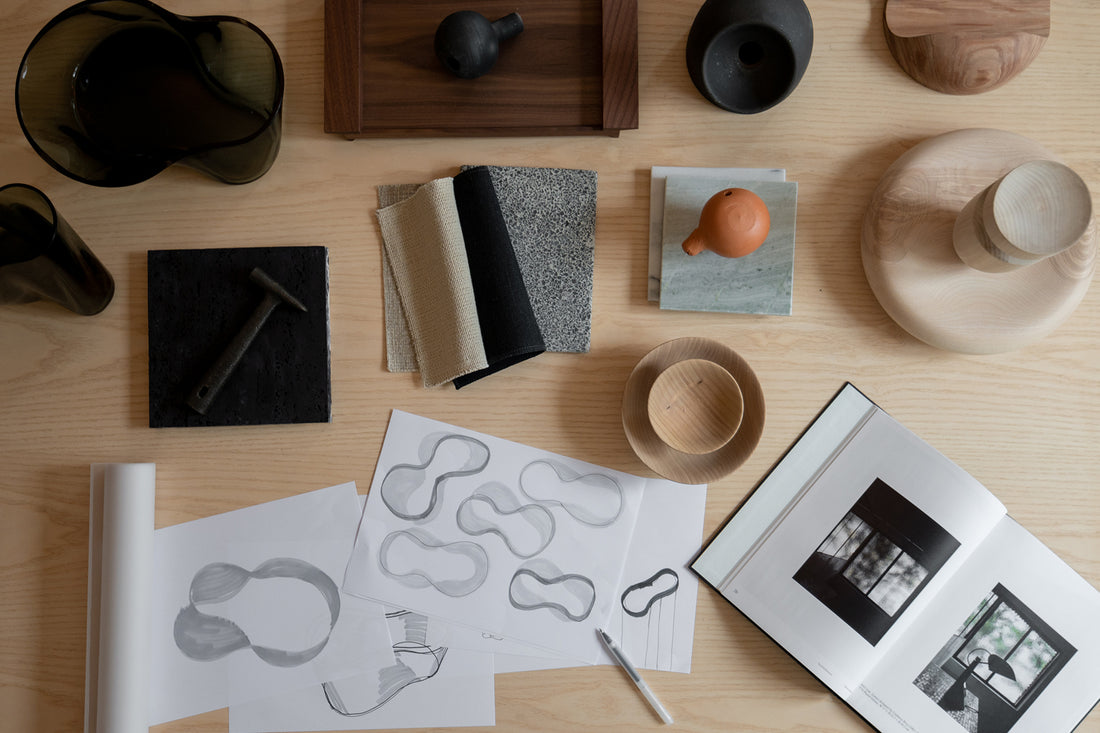Today the term ‘craftsmanship’ is at the heart of conversations worldwide about design. While sustainability was and is a rising concern for designers and design customers, craftsmanship is a natural extension of this trend. It takes us back in time and into the future - and deep discussions of process.

Why, in particular, are today’s leading designers determined to discuss craft, artisanship and the human hands that make the objects we love? Why now?
“We assume everything around us is machine made,” says Gabriel Tan, the Portugal-based designer behind AUDO’s collection of Aer Vases. “It’s simply not true.”
Tan is highlighting craftsmanship within his own studio practice and more broadly through the platform that international success he has awarded him, working in collaborations with AUDO and Wallpaper*, to name a few.
“Craftsmanship brings attention to the question of consumption. We feel more connected to the person who made the object. It adds real value,” says Tan.

A design is just an idea, a vision, and in many ways, a hope until it takes physical form. The physical effort behind the creation means everything. To stand strong, a design must be translated from the designer to experts of physical creation. It must be entrusted to experts of physical detail and skill. If all those involved are experienced and truly committed to the task, even a challenging design can be born true to the designer’s vision and intent.
It’s no wonder, perhaps, that designers - now celebrated internationally more than ever before - are asking brands and customers to consider craft. Without experts in the physical laws of strength, balance, flexibility and power, a design remains a dream.

The designer’s relationship to craftsmanship is intrinsic
Tan was inspired by icons like Alvar Aalto’s vases from 1930 when embarking on the design process for the Aer Vase Collection but his goal was to create something entirely new, drawing on the spirit of glass design and glass tradition. In partnership, Tan’s studio and AUDO merged digital technology and traditional handcraft for the Aer Collection, for a process that honors craftsmanship and technology with quality as its top value.

Tan’s vision for the Aer Vase was a tall, slim but remarkably stable glass vessel. The unique proportions presented a challenge; the height of the vase design requires the base to be heavy but delicate. Glass is a notoriously difficult material to shape and balance in strong, organic shapes. The base had to be perfect for the vase to stand strong. The thickness has to be exact.

A mould was produced digitally for casting, and individual artisans blow glass into the mould for every vase and bowl, careful to extend the material in the mould properly using only the force of their breath. The physical effort of the artisan determines the glass’ thickness; if it is too thin and the vase will break, too thick and the piece diverges from the design. It’s this human effort - this craftsmanship - that makes each vase and bowl somewhat unique. It’s this process of production that connects the designer whose hands drew the design, to the artisans whose hands hold the tools tightly as they blow the glass, to the hands of the customer who will move the vase in their private space and carefully arrange flowers within it.
Craftsmanship makes the design human and is the essential bridge between designers and customers.
Needless to say, AUDO is very pleased to see craftsmanship’s relevancy growing worldwide and to work with talented artisans and designers every day.
